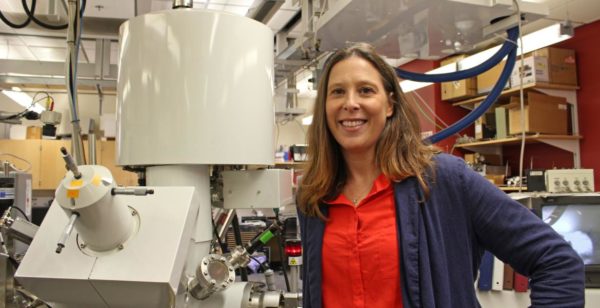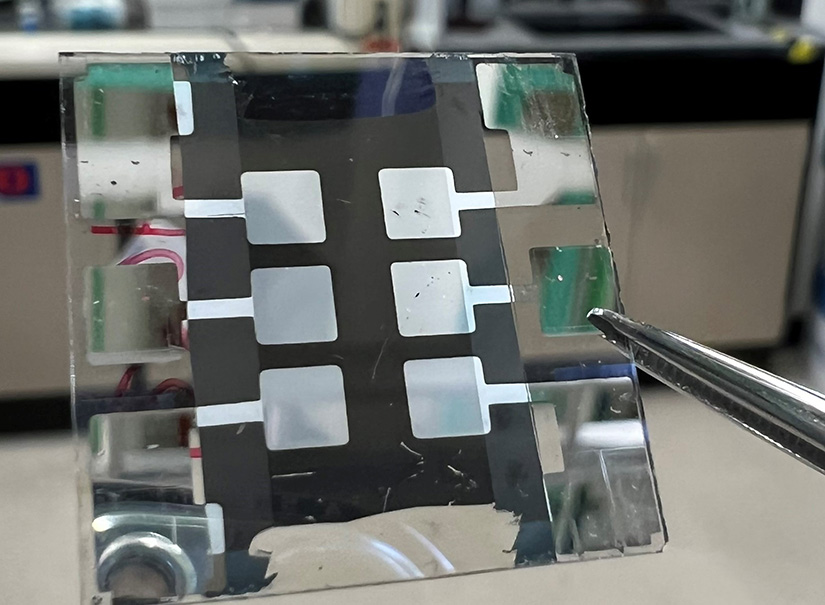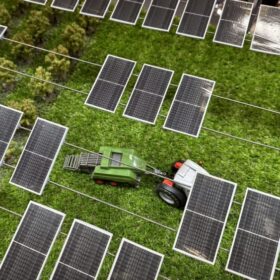Published in the journal Nature, researchers at the National Renewable Energy Laboratory (NREL) posted results of a new perovskite solar cell that achieved breakthrough levels of stability and efficiency for the photovoltaic material. The project was conducted in partnership with University of Colorado, Boulder, and the University of California, San Diego.
A new architectural structure enabled the perovskite solar cell to demonstrate a certified 24% efficiency, while retaining 87% of its original output capability after 2,400 hours of operation at 55 degrees Celsius.
Perovskites are defined by their crystalline structure. They are actively being researched worldwide for their ability to be manufactured at scale as readily printable materials that can be deposited as paper-thin solar cells.
The flexible, lightweight cells are hailed for their numerous uses, like on low-load roofs, in aviation, wearables, and rapid delivery and rollout in disaster situations. Perovskites are naturally occurring minerals, but they also represent lab-made crystalline structured materials that imitate the natural minerals’ shape.
Perovskites have made leaps and bounds in their efficiency, growing from 3% in 2009 to over 25% today. However, the material currently struggles with stability, in part because temperature sensitivity causes them to degrade relatively rapidly. The earliest perovskites worked for only a few minutes or hours, but today they have a lifespan of several months.
This research project employed the use of an “inverted” architecture, rather than the latest architecture that has unlocked record efficiencies. The inverted structure is achieved by using a different layering technique in the glass substrate the perovskite crystals are deposited into.
The team also made use of a new molecule on the surface of the perovskite, 3-(Aminomethyl) pyridine (3-APy). The molecule reacted to the formamidinium within the perovskite to create an electric field on the surface of the perovskite layer.
“That suddenly gave us a huge boost of not only efficiency but also stability,” said Kai Zhu, senior scientist in chemistry and nanoscience at NREL. The newly introduced molecule boosted efficiency from under 23% to over 25%.
Zhu described the results as “state-of-the-art levels of efficiency and operational reliability.”
The project was funded by the Center for Hybrid Organic-Inorganic Semiconductors for Energy (CHOISE), an Energy Frontier Research Center within DOE’s Office of Basic Energy Sciences, and from the DOE’s Solar Energy Technologies Office (SETO).
In-line defect detection
SETO is also funding a project run by University of Arizona to develop a new method for identifying defects in perovskite solar cell development during the manufacturing process.

The University of Arizona is developing a method to detect the creation of defects not after the perovskites are made, which is the traditional operation, but rather during the manufacturing process.
The project uses what lead researcher Erin Ratcliff describes as” an in-line characterization tool.” The aim of the tool is to perform quality control assessment in the exact moments the perovskite cells are made. “This quality control method is also an indication for the long-term stability of the materials you’re making.”
“Large-scale manufacturing of these robust, high-quality perovskite-based photovoltaics will require low-cost and practical quality control methods that can be integrated into an operating line,” said Laura Silva, senior licensing manager for the College of Science at Tech Launch Arizona. “Ratcliff’s approach is overcoming these challenges and making the technology much more attractive in a marketplace that’s demanding higher and higher performance.”
This content is protected by copyright and may not be reused. If you want to cooperate with us and would like to reuse some of our content, please contact: editors@pv-magazine.com.









what is the ratio of pv
Efficiency of perovskites cell between its real record to it theoretical up limit
Compare to polycrystalline silicon and single crystal silicon 18% to 25%
If they are similar the next step should be challenging the stability
They are the similar scenario
Their gap of difference should be crystal structure issue
To be focused for next step s?
I guess